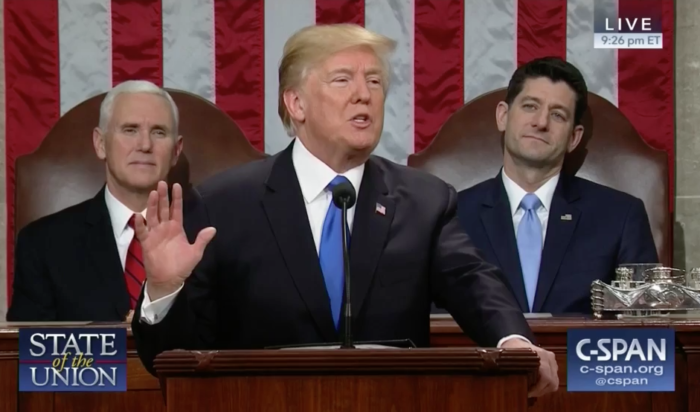Guest author Dan Guild has closely followed American presidential polling and elections for decades. -promoted by desmoinesdem
Consider three quotes: “It’s the economy, stupid”–James Carville, 1992
“Events dear boy, events”–Attributed to British Prime Minister Harold Macmillan
“That the prince must consider, as has been in part said before, how to avoid those things which will make him hated or contemptible… It makes him hated above all things, as I have said, to be rapacious, and to be a violator of the property and women of his subjects, from both of which he must abstain.”–Machiavelli, The Prince, 1513
I cannot prove Machiavelli had Donald Trump in mind when he wrote those words 500 years ago. But the polling is consistent (we will explore it in a later post) – after his first year Trump is one of the most hated politicians in American history.
This was true on election day in 2016, when only 38 percent had a favorable impression of him, the lowest rating any major presidential candidate has received since exit polling began. He did not get the typical boost most presidents get after being elected. His numbers have not improved despite what by some indications is a good economy. In fact, about 75 percent of polls taken since May 2017 find his approval rating within 3 points of his favorable rating in the election day exit.
So the question must be asked: can anything change the public’s impression of Donald Trump?
I used the MacMillan quote in one of the last pieces I wrote here before the election in 2016. It is unclear if he actually said that, but the warning is well taken. Politics is often turned upside down by events. Some examples from recent history: the financial crisis, the killing of Osama Bin Laden, the Iraq War, 9/11, and the Russian invasion of Afghanistan. All those events had immediate and profound effects on the public’s perception of the president.
The Carville comment captures something everyone intrinsically believes: the economy affects perceptions of our politics and our politicians.
So could an event change the public perception of Trump? Could the economy reverse it? Or is Trump essentially doomed?
What do the historical data say?
When I started this piece, I began looking at approval ratings and all manner of economic indicators to see how strong and influence they exerted. I did so knowing academics have looked at this data before, and not found much of an association. This is surprising, but on first glance that is what I found.
This analysis covers the years 1978 to 2016.
Think of R squared as how important something is in effecting something else. What we see here, is what others have found, individual economic statistics don’t explain much by themselves.
But can this really be right? It defies common sense.
Well, one explanation is context. In 1984 Ronald Regan won 49 States and nearly 60 percent of the vote. And the unemployment rate was 7.4 percent. In 1992 George Bush, who not more than 18 months earlier had an approval rating of over 90 percent, did not get over 40 percent of the vote in his bid for re-election. All agreed, it was the economy, stupid.
The unemployment rate in 1992 was just one-tenth of a point lower than when Ronald Reagan won 49 states eight years earlier.
Clearly, it is the DIRECTION and not the static number that determines how people think about the economy. You can adjust some of these numbers to get them better, but really the best number is consumer sentiment. Consumer sentiment asks about people’s subjective judgment of the economy. The question is NOT a part of political surveys, and does not appear to have become as polarized as some other numbers are.
Still, this doesn’t seem right. And in truth, it isn’t, for two reasons. But these reasons are themselves quite interesting.
One mistake academics make in looking at all of this is they don’t seem to understand the natural cycles that occur in politics. One of those cycles is the “Honeymoon Period.” Presidents tend to get high approval ratings early in their presidency. The effect lasts about six months.
How strong is this effect? Between 18 and 20 points. When you factor in this effect, consumer sentiment explains about 43 percent of a President’s approval rating. Suddenly a weak explanation becomes a pretty good one.
But the second mistake is a failure to heed Harold Macmillan’s advice about events.
Here are some events and how they have affected presidential approval ratings:
Surely this table makes MacMillian’s point. These swings are enormous. Any similar event of them would likely take Trump to a 50 percent approval rating. Sometimes the effects fade, but sometimes they don’t (see, e.g. Bill Clinton after the federal government shutdown, Ronald Reagan after the U.S. invasion of Granada).
In the next post: a consolidated picture.
Top image: Screen shot from C-SPAN broadcast President Donald Trump delivering the State of the Union address on January 30, 2018.



